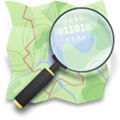 The ambitious targets for the use of renewable energy sources in Europe by 2020 have set the pace for a growing interest in geospatial awareness about biomass resources. “Where are the best biofuel resources located?” was still a common question asked by power-plant managers a decade or two ago. You would probably have taken a printed topographic map and pointed at the green areas around the plant representing forest and yellow-shaded plains standing for agriculture. Nowadays, just answering that question is not enough. In most cases you need to clarify, for example, which are the best ways to transport the feedstock and who else is also trying to do that in the same region. Sensitivity analyses about the changes in feedstock supply costs and gate prices have become popular, which means that very often some kind of geographic-data mining is needed.
The ambitious targets for the use of renewable energy sources in Europe by 2020 have set the pace for a growing interest in geospatial awareness about biomass resources. “Where are the best biofuel resources located?” was still a common question asked by power-plant managers a decade or two ago. You would probably have taken a printed topographic map and pointed at the green areas around the plant representing forest and yellow-shaded plains standing for agriculture. Nowadays, just answering that question is not enough. In most cases you need to clarify, for example, which are the best ways to transport the feedstock and who else is also trying to do that in the same region. Sensitivity analyses about the changes in feedstock supply costs and gate prices have become popular, which means that very often some kind of geographic-data mining is needed.
Accurate spatial data are necessary to guarantee a sustainable biomass supply
From a logistics point of view, forest fuel supply is one of the most challenging features to put on a map, not only because there may be hundreds of supply points feeding a single power plant, but also because there may be several ways to transport and process the fuel before the biomass ends up to the boiler. The bioenergy research group at Lappeenranta University of Technology has been dealing with these questions for more than ten years, and it seems that things are getting more complex all the time.
In our opinion, the two most important factors are the changes in potential biomass end-user profiles and the tightening criteria of sustainable RES use. With the former we mean that, instead of conventional CHP plants, there will be an increasing number of biomass refining plants producing liquid, solid or gaseous bio-products whose market prices and, thus, producers’ paying ability for feedstock, are still quite unclear. In addition, there may be some special requirements for the rolling stock properties. The latter factor refers to the progress in EU-legislation concerning sustainability of biomass feedstock. If a truck load of whichever biofuel fraction is to be traced back to its origins, just to make sure that the feedstock fulfills the sustainability criteria, how can one do it credibly without using geographic data?
GIS resources are becoming increasingly accessible
The good news is that geographic data and applicable Geographic Information Systems (GIS) software have become relatively easy and cheap to purchase. On our home ground, Finland, the basic elements of forest-fuel supply analyses, forest resource and road network data, have been available free of charge through online download services for a year. Moreover, the data are of high quality as they are provided by respective governmental bodies, such as a national mapping agency or a forest research organization.
In fact, public sharing of GIS data that are collected and governed by national authorities and funded by tax-payers is put into action in several European countries.A major driving force behind this movement is the INSPIRE directive that encourages Member States to create interoperability between spatial data systems and share their data through so called geo-portals, which are typically user-friendly map-based download services.
Additionally, OpenStreetMap is a collaborative project where all GIS data are public, and data collection runs principally on a voluntary basis. Especially in biomass transportation analyses, the OpenStreetMap with a worldwide coverage is a great complement, or even a supplement, for other data sources, although some weak spots regarding data accuracy exist in certain areas.
So far, the greatest GIS related challenge in our research will be a project where two Finnish “giant-scale” biofuel supply concepts are modeled with simulation study methods. GIS based source data will be heavily involved and this time agro-biomass will also be included. It is still too early to describe how extensive, or explicit, the result set will be, but I can promise that it will definitely be more than just printed topographic maps.
More resources on this topic can be found here.
This post was written by Olli-Jussi Korpinen, Eero Jäppinen and Tapio Ranta, Lappeenranta University of Technology, Finland.


